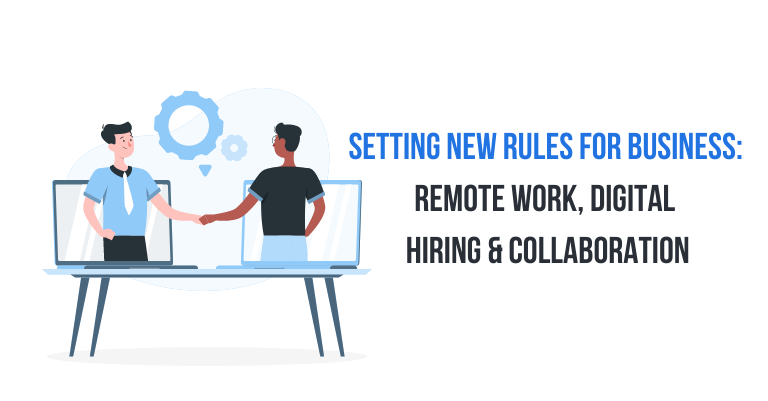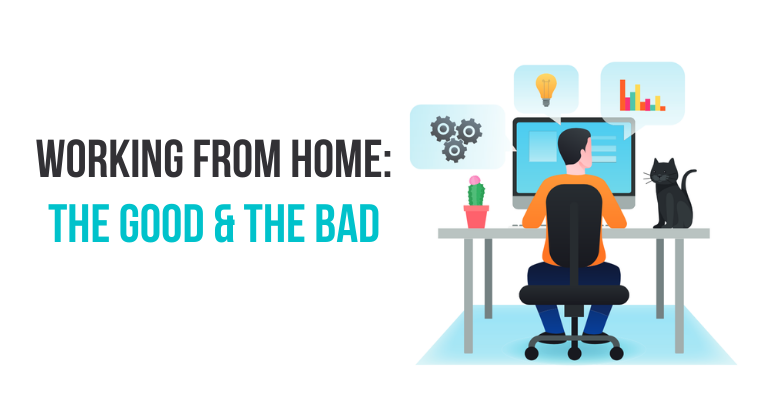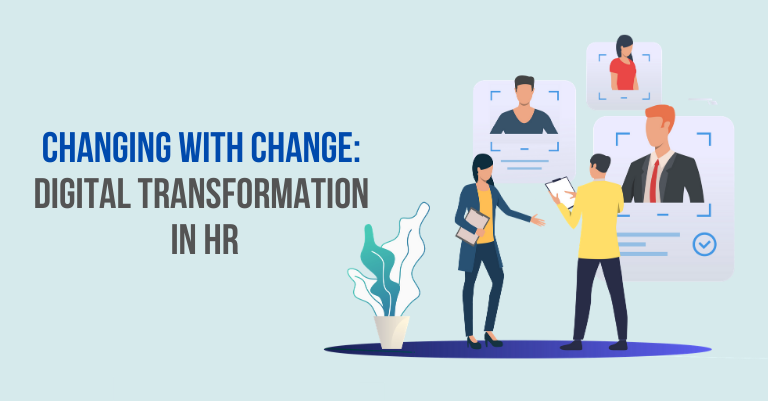
Setting New Rules For Business: Remote Work, Digital Hiring & Collaboration
Posted On: July 6, 2020
In 1958, A British European Airways Flight crashed on its third attempt to take off from a slush-covered runway at Munich-Riem Airport, West Germany. On the plane was the Manchester United Football Team. They lost almost the whole team including their captain. They did not have a team to play for the upcoming matches that year. The world media vehemently said this might be the end of Manchester United Football Club.
But they never stopped playing, they came back stronger than ever and became the club with the highest English Premier league titles. As businesses around the world consider how they can return from the torment inflicted by the coronavirus, Manchester United’s journey from losing everything to triumph provides food for thought.
Prepping The Field
Businesses are doing the things that were never done before. New rules are being set. New experiments are being conducted. And, most of them will become the new normal; those that we thought were ‘risky’ and ‘unsuitable’ just a few years ago.
In this article, we will explore how companies are reimagining their business models as they return to full speed.
The moment is not to be lost: those who step up their game will be better off and far more ready to confront the challenges.
Remote Work
Employees all have worked in offices, with the continued support of team members in close proximity. With the pandemic forcing businesses to reinvent contingencies, employees work from home, with no physical contact with their peers, superiors, or mentors.
With systematic remote coordination organization’s missions and vision of work are kept intact. Initially, companies believed that if the employees work from home they may get distracted with their home ambiance. Their productivity may decrease. Instead, things worked out for the best.
Remote work began benefitting business, while also becoming a norm for employees all over the world. With better Internet accessibility in most parts of the world, people became better suited to work from the safety of their homes. More so, big names like Google, Twitter, Facebook, Apple, etc. decided to allow their employees to work remotely till whenever necessary.
FlexJobs’ annual survey found that 65% of respondents are more productive in their home office than in a traditional workplace.
Digital Hiring
In a recent Gartner survey, two-thirds of business leaders said that if their company does not digitalize more by 2020, it will no longer be competitive. Within hiring and recruitment, digitalization is changing everything. Starting from applications, all the way through processing, onboarding, and training.
For instance, at KocharTech, candidates applying for various roles are often asked to make a short video of themselves using an online video creator & record it, along with the online job application. Shortlisted candidates go through rounds of virtual interviews, tests, and assessments to ensure that they are best suited for certain roles. New employees are onboarded virtually and can go through training programs from the safety of their homes; minimizing the need for physical meetings, keeping in mind social distancing norms.
Twenty years ago, the resume was a piece of paper but now, it’s a collection of all candidate data. This data gets collected from online platforms, like participation in online communities, conferences, and meet-ups, and social media groups, company websites, etc.
With the help of this data, HR professionals can assess whether a person will fit the role and if they have the right skills for the job in question. With seamless user experience, online and digital hiring not only saves time and energy but also reduces the cost of resources used for both – the employer and the potential employee.
Online Collaboration
With near to zero physical contact and conference room meetings, calibration between teams may get lost in translation. Tools and collaborative technologies like video conferencing, workplace messaging applications, and file-sharing platforms have become key. The need to stay connected is now more important than ever. Working remotely may be a safer way to work for now, but it also pushes a lot of people to feel lonely. With no co-workers to walk up to in the middle of a workday, or a senior to ask for help, employees tend to feel disconnected from the organization.
The onus falls on the company to engage its employees in order to maintain a healthy balance and to ensure sound communication within the organization. Indeed, the video footprint is bound to continue growing as employees get more comfortable using it and companies realize the cost savings.
Some of the benefits of online collaboration tools are:
- Less dependency on emails
- Increased flexibility
- Improved workflow
- Makes project management easier
- Improved communication across the organization
Change is good
Companies that failed to keep up with the changing needs of business faced the brunt of the lockdown. Customers immediately moved to online platforms for service and products. With more and more customers moving online, they reinforce newer habits of virtual communication. It becomes the prerogative of business to cater to these needs.
With integrated omnichannel support blended with Artificial Intelligence, KocharTech helped companies and start-ups to interact with their customers better through emails, and chat, while simplifying voice support.
For companies around the world, the way they cater to their employees and customers in the time of need is paramount. Remote work, digital hiring, and collaboration are the first few steps as businesses consider how to navigate the post-COVID-19 environment. Business, as usual, will not be enough as the rules of the game have changed. But by reimagining how they organize and use technology, companies can set the foundations for enduring success.



